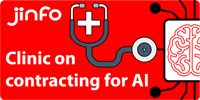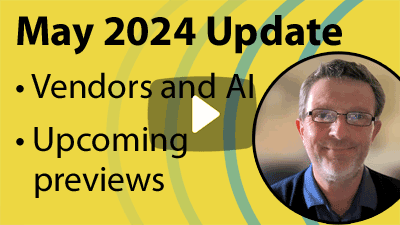Web 3.0: Moving towards connecting knowledge
Jinfo Blog
7th March 2008
Item
Recently released by Project10X, the Semantic Wave 2008 Report http://www.semantic-conference.com/publications.html puts the upcoming Web 3.0 in perspective and draws pictures of how the Web is evolving from connecting information and people to connecting knowledge, and eventually heading for Web 4.0 which is about enabling people and machines to connect intelligence in context. Among the many interesting visions that the report sketches is how Web 3.0 will overcome the fragmentation of information, processes, and application functionality. By examining how humans encode thoughts and share knowledge and meaning, five languages are outlined: - Natural language as documents, speech, stories; - Visual language as tables, graphics, images; - Formal language as models, schema, logic, mathematics, professional and scientific notations; - Behavior language as software code, declarative specifications, functions, algorithms; - Sensory language as user experience, human-computer interface. The Web today is well developed to store and present knowledge in separate forms using these languages. âComputers that produced these artifacts mostly have been used as electronic pencils, with little (if any) understanding of what the writing meant, and no ability to interpret other ways of expressing the same idea.â Thatâs going to change. Web 3.0 systems will be able to capture knowledge from different sources, interpret and interrelate different ways of expressing ideas with each other, share what they know with people and machines, and re-express and communicate what they know in different contexts, formats, and media. How will Web 3.0 impact the life and practice of information professionals? If the central value is shifted from connecting information to connecting knowledge where the context for representing meanings is essential, what kind of new market opportunities are emerging for the information industry? How could info pros be prepared in terms of skills and mindset to ensure staying on-demand?About this article
- Blog post title: Web 3.0: Moving towards connecting knowledge
- Link to this page
- View printable version
What's new at Jinfo?
Community session
11th December 2024
2025 strategic planning; evaluating research reports; The Financial Times, news and AI
5th November 2024

How are information managers getting involved with AI? Navigating privacy, ethics, and intellectual property
- 2025 strategic planning; evaluating research reports; The Financial Times, news and AI
5th November 2024 - All recent Jinfo Subscription content
31st October 2024 - End-user training best practice research
24th October 2024
- Jinfo Community session (TBC) (Community) 23rd January 2025
- Clinic on contracting for AI (Community) 11th December 2024
- Discussing news and AI strategies with the Financial Times (Community) 21st November 2024
Learn more about the Jinfo Subscription

